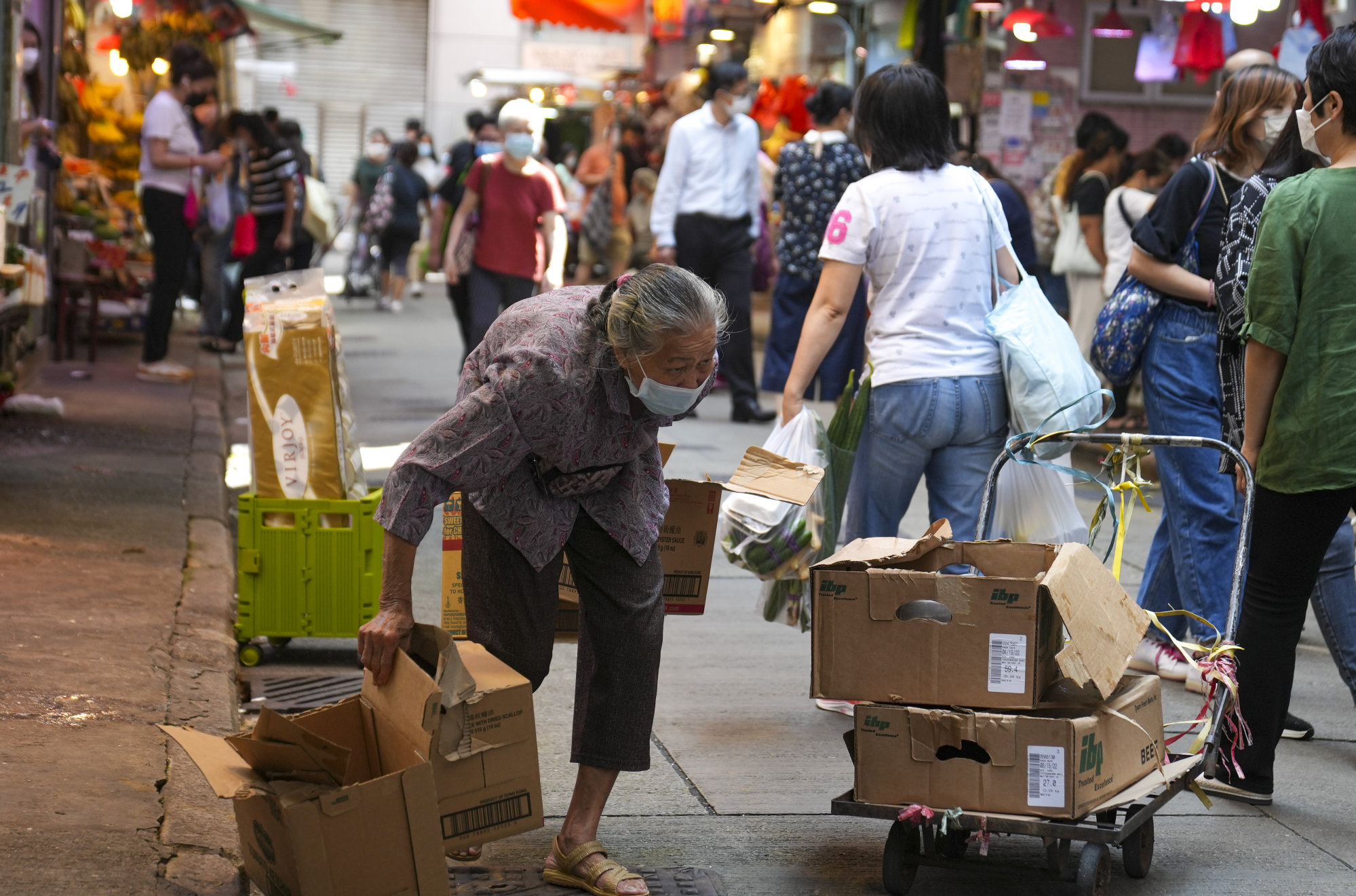
Minimum wage rise fails to fully reward Hong Kong’s working poor
- An increase of 7 per cent after a four-year freeze may sound generous, but it will not go far in expensive city
A near 7 per cent pay rise may seem like a decent reward for workers during a severe economic downturn. But for those who are earning the notoriously low minimum wage in Hong Kong, the HK$2.50 (US 32 cents) increase to HK$40 per hour – the first rise in four years – is not even enough for a fast-food meal.
Alas, this is the reality facing the so-called working poor in the city. It is estimated that some 46,000 to 87,000 workers, mostly security guards and cleaners, will benefit when the new wage floor comes into effect on Labour Day in May.
Coming after a freeze resulting from the Covid-battered economy since 2019, the adjustment is probably good news for many low-income earners. But the new monthly salary for a typical nine-hour shift is still below HK$10,000.
Not only does it fall short of a decent living standard in our costly city, but also it is arguably a disincentive to work when people are better off relying on the social welfare safety net.

In any case, the 6.7 per cent rise from the existing HK$37.50 wage cap barely covers the pace of inflation over the past few years. It pales into insignificance when put against soaring electricity bills and other utility charges.
The fact that fewer workers may benefit from the review, which is conducted every two years, than before has also raised questions about the use of a statutory wage floor.
That said, the economic impact of a higher minimum wage cannot be overlooked. With the economy still shrouded in a cloud of uncertainty, a bigger rise would have fuelled even stronger resistance from business.
It is estimated that the approved increase may add as much as HK$910 million to wage bills each year. Had the level been set at HK$44 an hour, as many as 19,800 workers could have lost their jobs, pushing the unemployment rate up 0.54 percentage points, according to the government.
Adding to concerns is the ongoing restructuring of the workforce. The prolonged pandemic has prompted many workers to switch to more stable jobs, resulting in severe manpower shortages in some sectors when the city is preparing for a wider opening up with the mainland and the world.
Hong Kong minimum wage to rise to HK$40 an hour in May after 4-year freeze
How the new minimum wage will shape the economic recovery remains to be seen.
More than 270,000 low-income earners are said to have benefited when the minimum wage was first introduced at HK$28 in 2011. Even though the level has increased by 43 per cent since then, those in the lower-income bracket are still struggling to make ends meet.
The usual reactions of labour and business groups may well be seen as helping to strike the right balance between forestalling excessively low wages and sustaining economic growth and competitiveness. But the city certainly can afford a bigger reward for the working poor.

